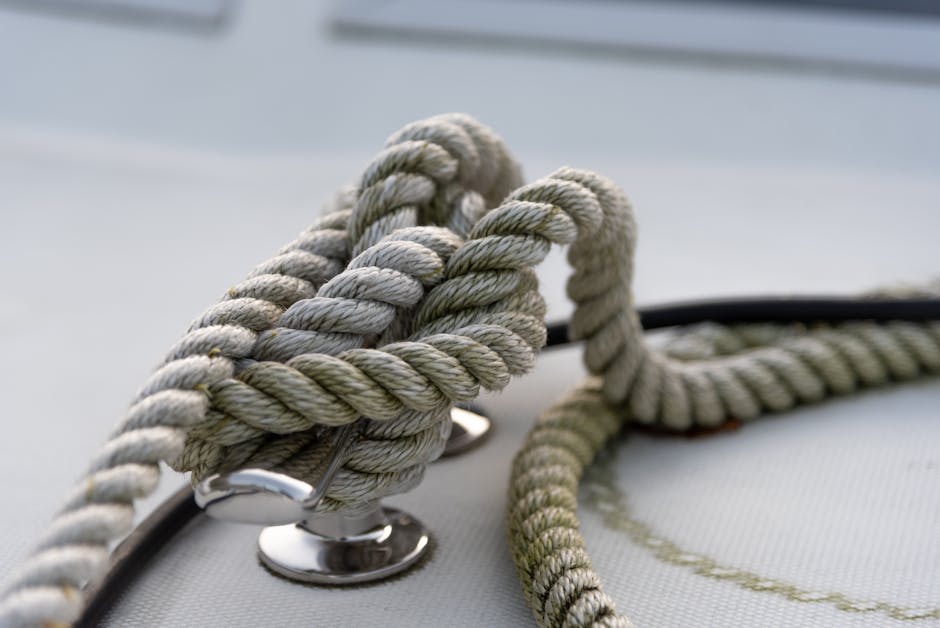
Can Dock Lines Affect the Safety of My Boat?
Let’s dive into how dock lines play a crucial role in ensuring the safety of your beloved boat.
Understanding Dock Lines
Dock lines are essential components that help keep your boat secure while docked. These lines act as the primary means of preventing your vessel from drifting away or colliding with other boats or the dock. Understanding the importance of properly sized and maintained dock lines can greatly contribute to the overall safety of your boat.
When it comes to dock lines, the material plays a crucial role. High-quality materials like nylon are commonly used due to their strength, stretchability, and resistance to UV rays and abrasion. Choosing the right material for your specific docking needs is vital to ensure the lines can withstand varying weather conditions and docking situations.
Proper knowledge of how to tie and arrange dock lines is imperative for securing your boat effectively. Incorrectly secured lines can lead to accidents, damage to your boat, or even injuries. By understanding the basics of knot tying and cleat positioning, boat owners can enhance the safety of their vessel while docked.
The length of dock lines is also a critical factor to consider. Lines that are too short may not provide enough slack during changing tides or rough weather, risking the boat pulling against the dock. Conversely, overly long lines can create a tangled mess or increase the risk of entanglement with propellers or other boat parts.
Regular inspection of dock lines is essential to identify wear and tear, fraying, or weakened sections. Friction, exposure to sunlight, and constant tension can degrade the quality of the lines over time. By inspecting and replacing damaged lines promptly, boat owners can maintain the safety and security of their vessel.
Choosing the Right Dock Lines
Selecting the appropriate dock lines for your boat involves considering various factors such as the size and weight of your vessel, prevailing weather conditions, and the type of dock you will be using. Thicker and stronger lines are typically recommended for larger boats or areas with high wind and currents.
The diameter of dock lines determines their weight-bearing capacity and stretchability. Thicker lines have higher tensile strength but may be less flexible, while thinner lines offer more elasticity but lower strength. Matching the line diameter to your boat’s requirements is crucial for withstanding external forces and ensuring safety.
Investing in premium-quality dock lines may initially seem like a higher cost, but the long-term benefits far outweigh the investment. High-quality lines are more durable, resistant to wear, and less likely to snap under pressure. By prioritizing safety and reliability, boat owners can enjoy peace of mind during docking and mooring.
Consider opting for reflective dock lines for added visibility during low-light conditions or at night. Reflective threads woven into the lines can enhance the visibility of your boat’s mooring setup, reducing the risk of collisions with other vessels and ensuring that your boat is easily spotted by approaching watercraft.
Properly Securing Dock Lines
Securing dock lines correctly involves more than just tying them to a cleat. The angle, position, and number of lines used play a significant role in the stability and safety of your boat while docked. Crossing lines in a figure-eight pattern or using spring lines can help distribute forces evenly and prevent excessive movement.
Maintaining proper tension in dock lines is crucial to prevent your boat from drifting away or banging against the dock. Lines should be snug but not overly tight, allowing for natural movement without risking slackness. Periodically adjusting the tension based on weather conditions and tide changes can help optimize security.
Using chafe guards or protective sleeves at contact points can extend the lifespan of your dock lines by reducing friction and abrasion. Areas where lines rub against sharp edges or rough surfaces are prone to damage over time. By adding protective covers, boat owners can preserve the integrity of their lines and enhance safety.
Regular Maintenance and Inspection
Routine maintenance of dock lines is essential for ensuring their reliability and performance. Washing the lines with fresh water to remove salt and debris, inspecting for signs of wear, and allowing them to dry properly can prevent premature degradation. Additionally, storing dock lines in a dry, well-ventilated area can help prolong their lifespan.
Inspecting dock lines for fraying, broken strands, or weakened sections should be part of your regular boat maintenance routine. Identifying issues early allows for timely replacements and prevents unexpected line failures while out on the water. By addressing wear and tear promptly, boat owners can uphold the safety standards of their vessel.
Regularly cleaning and lubricating dock hardware such as cleats and bollards is equally important to maintain the efficiency of dock lines. Smooth contact points reduce friction and wear on the lines, ensuring a secure and durable mooring setup. Simple upkeep tasks can significantly enhance the safety and longevity of your docking equipment.
Safeguarding Your Boat with Quality Dock Lines
Ensuring your dock lines are in top condition is paramount for the safety and security of your boat. Remember, a small investment in quality lines can make a significant difference in protecting your valuable vessel. Safe sailing!
